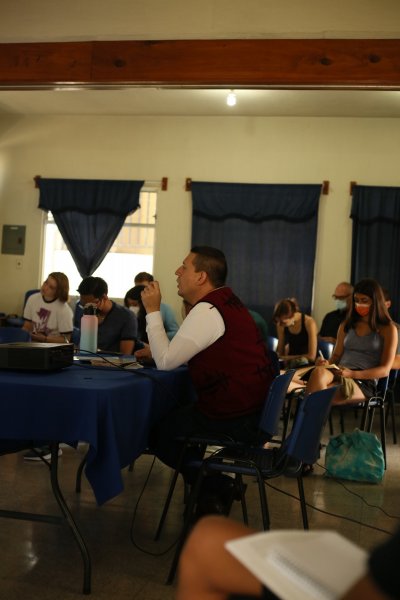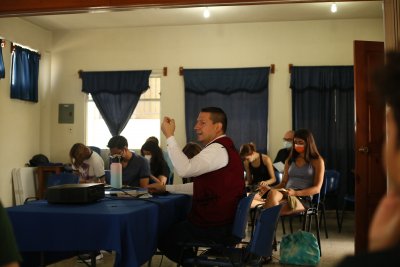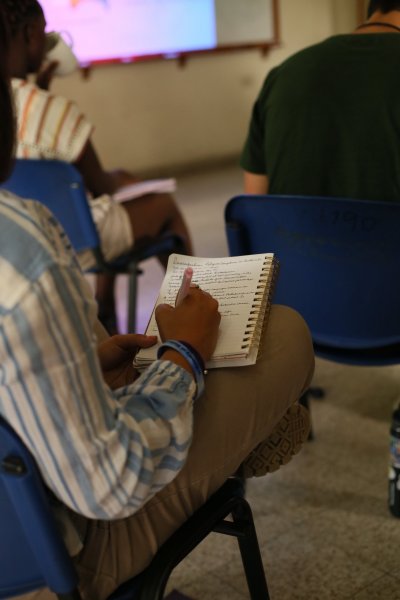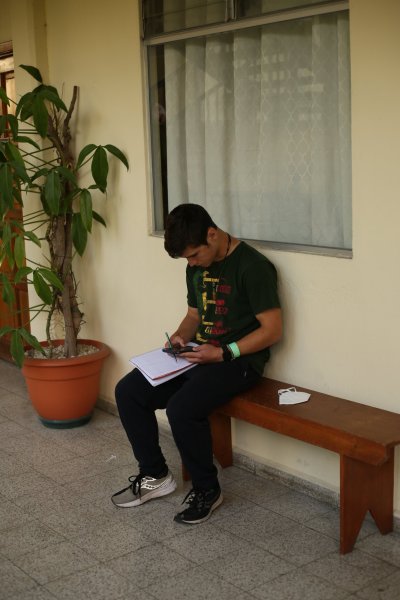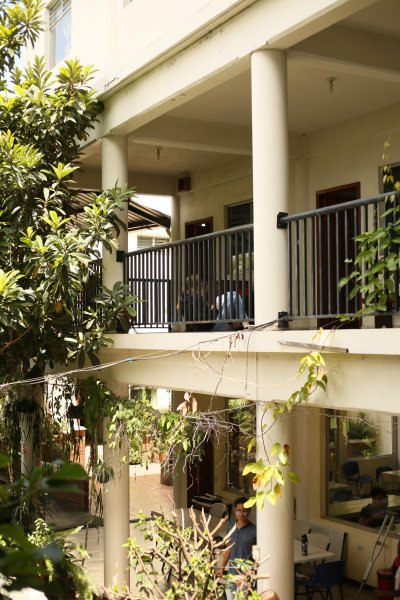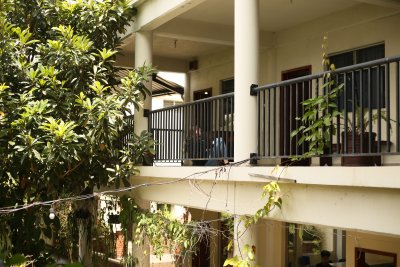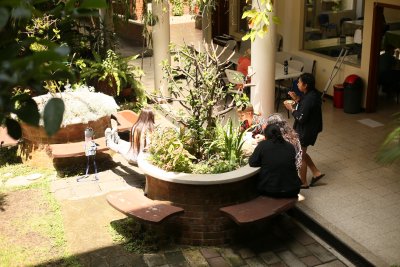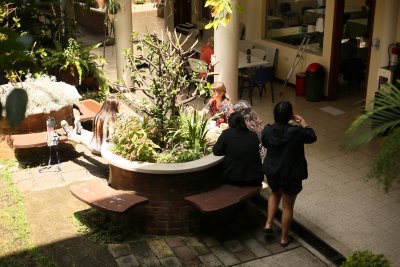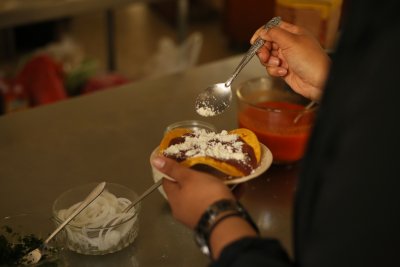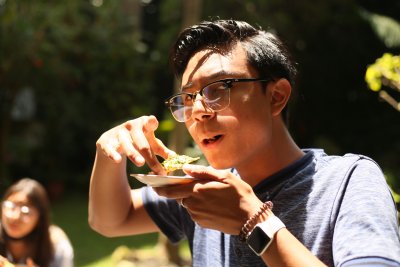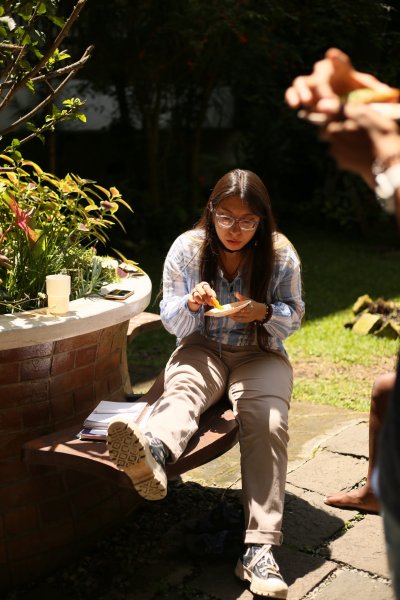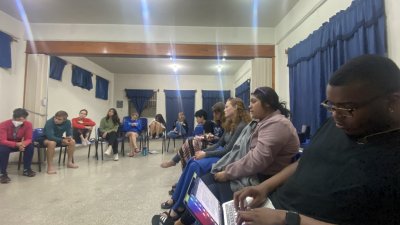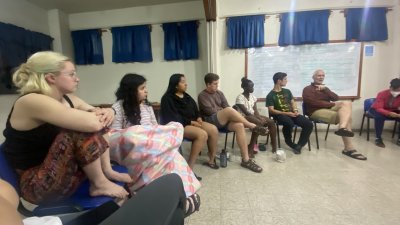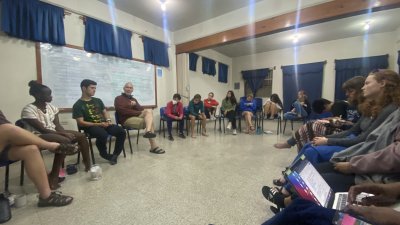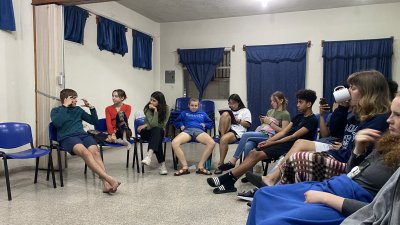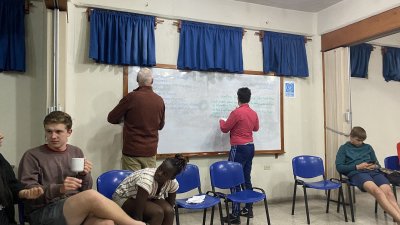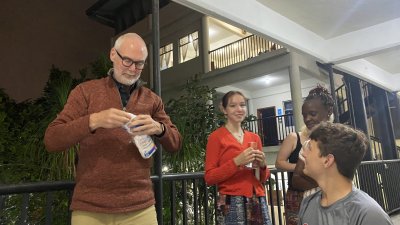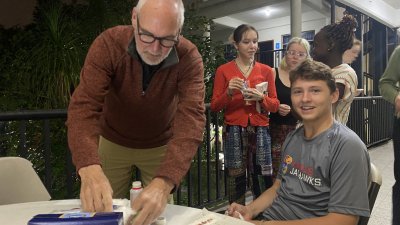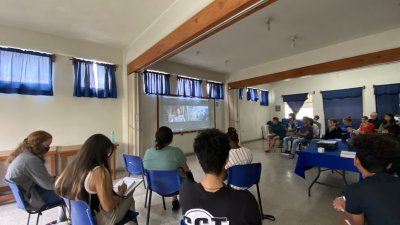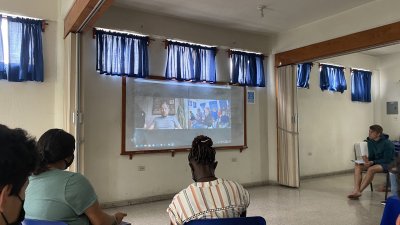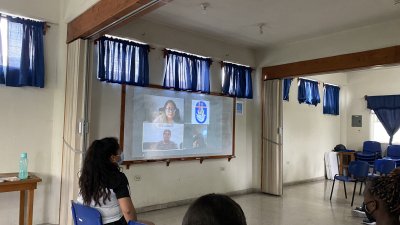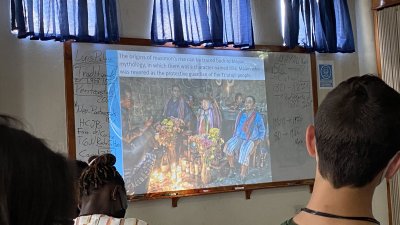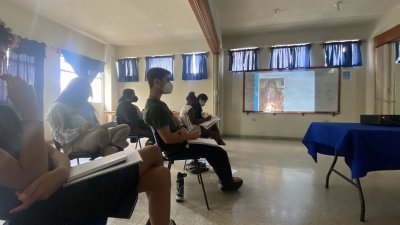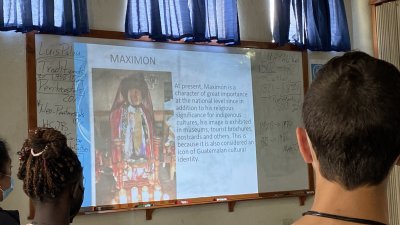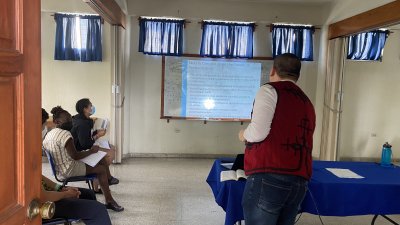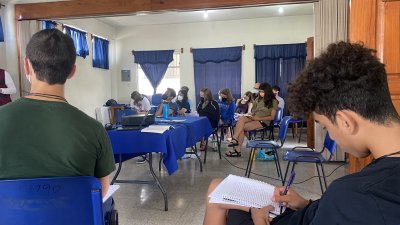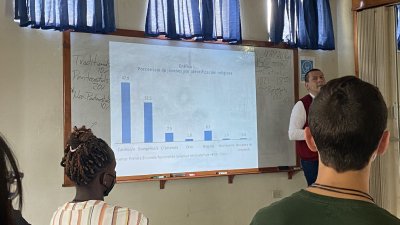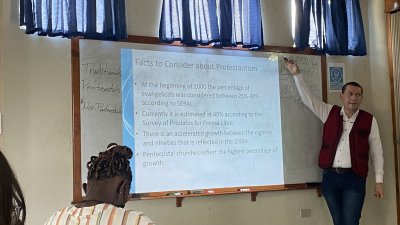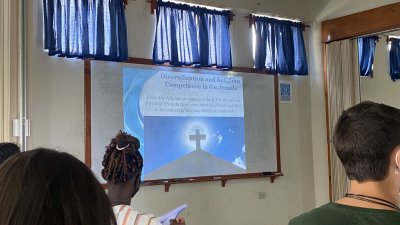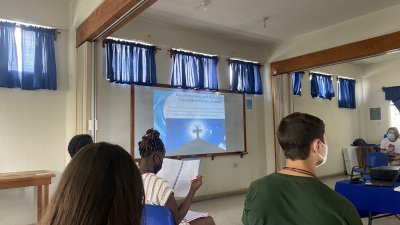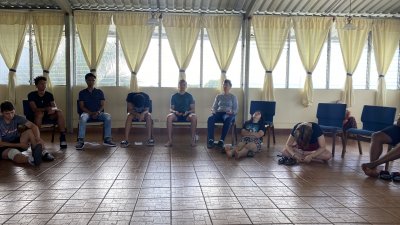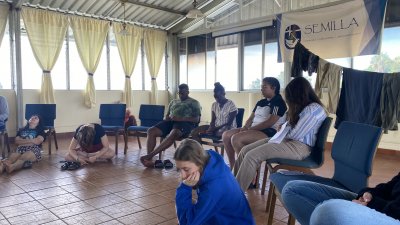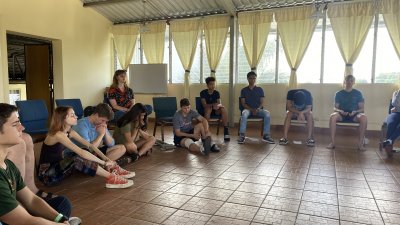Religious Diversification and Gangs in Guatemala
Monday morning’s worship was led with Psalm 37:23-24 as students were called to discuss fulfillment during their time together and what they bring to one another’s spiritual and cultural journeys. Answers ranged from a sense of gratitude for being able to study in Central America to allowing their curiosity to expand their perception of the world. Keith then expanded the fulfillment topic by affirming that the journey here presents an opportunity to become more self-aware, reflect on issues of justice and peacemaking, understand Guatemalan realities, consider complex theological questions, and ponder our vocation and callings. As students come to a better understanding of the systemic issues that continue to occur within Guatemala, they’re asked to consider how their God-given callings might play a role in addressing systemic injustices in their home communities or elsewhere in the world.
Diversification and religious competence in Guatemala was our main topic of conversation within the first part of class today. Fabian led our session once again after our two-day visit to Antigua. We considered the religious identification of people within Guatemala and the history of various religious sects. In particular, Protestantism within the country posed a hot topic for the class. At the beginning of the 21st century, there has been an accelerated growth of evangelicals within Guatemala. According to Fabian, as of now, the Pentecostal churches reflect the highest percentage of growth among Guatemalans. Pentecostal churches in particular saw a substantial increase within the 1970s. Factors contributing to the growth of Pentecostalism included the 36-year civil war, Christian responses to a horrific earthquake in the 1970s, and mission work by North American missionaries. During the civil war, Pentecostalism was considered a “safer” option since Evangelical and Pentecostal believers were not necessarily considered radicals or guerillas, partly because of their otherworldly focus.
In the second portion of the class led by Fabian, we discussed the cultural significance of an indigenous saint known as “Maximón.” Mayan mythology suggests that the saint began with a figure carved from a tz’atel tree and turned into the deity Maximón. Although the figure was originally an indigenous icon, it has slowly incorporated elements of Ladino culture with the garments draped over the wooden figure and with the renaming of Maximon as San Simon.
This afternoon we heard a testimony from Angelita, a former gang member here in Guatemala. Angelita’s pastor Yanett also joined our zoom call to provide additional information in regards to Angelita’s journey escaping the gang she was in. As we listened to Angelita speak, we learned of the church’s guidance that it has provided over the years as a sanctuary and a place of refuge for former gang members. Churches have generally helped women make a living to provide for their families here in Guatemala when other opportunities are scarce. Angelita grew up in an abusive household throughout her adolescence with a strong resentment towards her father. Around the age of thirteen, she was introduced to gang culture and became heavily involved with a local gang by selling drugs. In a way, Angelita viewed her involvement with the gang as a way to not only make an income, but also as a way to gain power. Through her initiation and the violence that was required to be initiated, she became an official gang member. After a few years, Angelita later met her husband, who was also a member of the same gang. They soon came to the realization that a life outside of their gang would be an ideal and much safer option. While gangs are somewhat notorious for their violent nature, a separate life would not be as easily accessible. There’s a price that comes with departing from a community centered around extortion and violence that Angelita and her husband were willing to pay that price. After they were able to leave behind their lives with the gang, the Mennonite church provided work for Angelita. As a part of her journey, Angelita wanted to share her story so that we might take advantage of the opportunities that we’re provided with back home. Nonetheless, she mentioned how grateful she is for her faith that allowed her to survive her time spent escaping the gang.
Goshen College professor and sociologist Robert Brenneman joined us via zoom after Angelita’s testimony to discuss topics relating to gang culture in Guatemala. Before beginning his lecture, Robert asked us to split into small groups to discuss what surprised us about Angelita’s sharing with us. Each student also went around and introduced themselves as well as why they’re in Guatemala (other than being a part of the SSTT program). Robert began with emphasizing that our time together in Guatemala is a “Laboratory for learning,” whether that be gaining a religious or cultural knowledge. He said he hoped that our Guatemalan sojourn would help us become more perceptive of the some of the problems that exist in our own communities. As we dove into conversation in regards to gangs, Robert asked, “How do we make sense of acts of violence committed by seemingly normal people?” He said we tend to separate those who do horrible things and incarcerate them as a way to better society because we believe that the rest of us are “incapable” of doing those things. We’re called to make sense of what seems senseless within the context of our faith.
Over the course of his dissertation research, Robert interviewed sixty-three ex-gang members to gain perspective into gang culture within Central America. He was plagued by understanding what would make a young person in Central America join a gang. Robert highlighted that we as a people need community, and we’re in a constant search for a sense of belonging.Without social interaction, just like being deprived of food or water, we get sick. In a way, gangs provide this sense of belonging and community for some youth in Central America and even the U.S. There’s even a willingness to sacrifice physical well-being in order to feel a social belonging as some members go through agonizing initiations. Robert’s perspective and research in regards to youth and gangs in Central America was academically stimulating for us as a group.
Evelyn wrote at the end of the day that she appreciated Robert noting that the Pentecostal and Evangelical churches of Guatemala have been accepting of former gang members, partly because they believe anyone can be transformed to be a better person if they repent of their past mistakes. She wrote (quoted with permission): “Where I seek transformation in my own life is spiritually. I say spiritually because I have a desire to know God more and understand his purpose for my life. So I want to be transformed spiritually in this way.”
Daniel reflected (cited with permission) on Robert’s presentation related to belonging, noting times in his life when he felt included or excluded and the importance of being affirmed within some social settings. “This applies to this group for several reasons,” he said.. “Our shared experience, our forming bonds, and the many things we are learning have provided me with an incredible sense of belonging. The love I feel for this group has been powerful. It fuels a desire to be a better man, and to be a better purveyor of the beautiful spirit of God.”
After a long day of sociological, historical and religious discussions, we came together for a late-night theological conversation with many of the questions we haven’t yet discussed. Sitting in a socratic seminar-esque circle, we voted on various questions students had asked that related to faith. We discussed nonviolence as a solution, spirituality and religious institutions, truth and mythology within scripture, theodicy, and disbelief in/belief in/proof for God. Despite having quite an early morning ahead of us (we head out at 5 a.m. for a three-day trip to Lago Atitlan), students were eager to engage with each other in academic and structured discussions. It was enlightening to hear different perspectives on faith and spirituality as we’ve reached the last week of SSTT.
-Alexander Koscher

